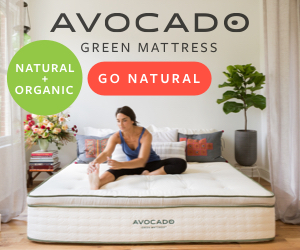When you make the switch to organic you need to think of ways you would have them flow into your normal eating routine rather than shoving them in and "trying" to make it work.
Start with in-season fruits, such as bananas and oranges, or even grapes along side your normal breakfast meal. Or, start out small with organic coffee or tea, even. Small changes with your routine will allow for bigger changes into full on organic meals that will come later.
Organic foods may seem like they are priced higher but, overall they pay a farmer a fair pay once sold to the store, especially if you stick to a co-op or a farmers' market. And, overall, buying local is a lot better than a huge market chain.
Look for foods with the USDA Organic logo, similar to the one below, will make sure the organic food conforms to the USDA Organic Food and Production Act. USDA Organic labels on your organic foods insures a chain of integrity when it comes to the food manufacturer.
One more thing to keep in mind is avoiding the "Dirty Dozen."
The Dirty Dozen is a list of twelve foods that could contain high amounts of pesticides in the growing process of the food. It's mostly fruits and vegetables but, pesticide-free foods is a great way to start you on your organic food transformation.
 |
| This photo is copyrighted, please do not copy. |
The USDA label requirements on all organic products follow basic labeling of only four categories:
• Product Label Claim:
1. 100% Organic
2. "Organic"
3. "Made with organic ingredients only specified on the label"
4. None (Nothing noted as organic)
• Label Parameters:
1. 100% Organic Ingredients
2. At least 95% organic ingredients
3. At least 70-95% Organic ingredients
4. Less than 70% Organic Ingredients
Seems complicated to keep track of but, once you get used to reading the labels and being aware of what you need to look for, it will become more routine.
Buying organic is a great way to start the change for yourself, your family, and the environment. Don't just look to the labels, go with the soil the product is grown in, as well. It's important that organic starts from the ground to your plate.
Eco-Tip: Use both sides of paper. If a quick note is something you need to jot down quickly, once that note is done, use the other side for another quick note. Paper waste is a huge problem, so don't add to the issue, use up as much space on a piece of paper as you can before tossing it. And when you do toss it, toss it in to be recycled. For this and other tips on going green visit, The Earth and Me Go Green.



































No comments:
Post a Comment
Thank you so much for commenting. I will read over your comment before publishing to make sure your comment aligns with the safety and positive environment I try to keep at this space. If you have further questions, please reach out to me at (mcwilkerson1977@yahoo.com). Thank you for understanding. While you wait, please check out the rest of my blog for content that may interest you. There's a lot of great things here and I look forward to connecting with you.